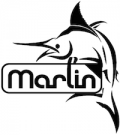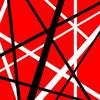Results 31 to 40 of 189
Thread: Show your MODS
-
08-13-2014, 05:17 PM #31
Install the Printer on a Travertine Tile
I have my printer sitting on a Travertine tile. The tile provides a flat surface so the printer is always square and doesn't twist when placed on different or flexible surfaces. The tile also adds mass to the surface, reducing the amount of sound and vibration transmitted to the surface. This works especially well with the Sorbothane isolator feet because it provides a vibration sink that improves the isolation.
You can get an 18" square tile at Lowes or Home Depot in the US, usually for less than $10. I put felt pads under the corners of the tile so it conforms to the table it's sitting on.
2014-08-12 09.10.26.jpg
-
08-13-2014, 05:21 PM #32
Extra washers to solve clearance problems
I initially had problems with the M5 screws that mount the wheels contacting the extruder gear and the underside of the heat bed. For the heat bed, I added an extra M5 washer to each of the four wheels. For the wheels with spacers, the washer goes between the spacer and the bed. For the wheels with eccentrics, the washer goes between the eccentric and the wheel, since it has to cam into the bed. The extra washer reduces the amount of screw that sticks out of the nut. I also placed one extra M3 washer under the spacer in the back-right corner. The springs on the other corners take up the slack, or you can use an extra washer on each corner if you're using auto-leveling.
The top screws on the X carriage also were hitting the extruder gear. An extra M5 washer on each wheel solved this problem, as well.
2014-08-12 09.06.44.jpg2014-08-12 09.07.07.jpg2014-08-12 09.07.41.jpg
-
08-13-2014, 05:26 PM #33
Insulate the heat bed from the Y platform
Many people find it useful to add insulation between the Y carriage platform and the heat bed. This allows the bed to heat up a little faster and retain heat better. It also reduces the thermal gradient in the wooden bed and reduces the warping. Without the insulation, the bed starts to warp as the top surface heats up, tightening the wheels on the extrusions. Then, as the heat soaks through the bed, it relaxes, loosening the fit of the wheels against the extrusions. With insulation, the heat flow rate is lower, and the gradient (hence the warping) is reduced.
I looked around for thin ceramic wool fabric, but ended up just cutting a piece of corrugated cardboard, and it's been working fine. The sheet has small holes in it to clear the various screw heads.
You may wish to keep an eye on it or use a more heat-resistant material, depending on how hot you run your bed.
2014-08-12 09.08.56.jpg
-
08-13-2014, 05:29 PM #34
Adhesive Velcro strips to reduce belt slap
When printing, my X belt would often vibrate like a guitar string, slapping the extrusion and making an annoying noise. Changing the belt tension didn't really solve the problem. It just changed the resonant frequency so it slapped at a different speed.
I solved the problem by sticking four small pieces of soft adhesive Velcro to the inside of the extrusions. It barely touches the belt in operation, so it doesn't really add any drag, but it completely absorbs any vibration, preventing the belt slapping noise.
2014-08-12 09.08.09.jpg2014-08-12 09.08.18.jpg
-
08-13-2014, 07:09 PM #35
Next time I'm at Home Depot I'm going to see if I can get a big, flat 18" tile. I'm thinking wiith a diamond bit in a Dremel tool and water pouring on it... I can drill holes in the right place to Tie Wrap it down hard to the tile. Then I might be able to safely move my printer around.
-
08-14-2014, 12:08 AM #36
-
08-17-2014, 09:37 PM #37
Clough42 - I noticed you had designed and used fan shrouds and fans for the x axis motor and extruder motor. I just got my i3V printer and have only printed 3mm pla via J Head, however none of the motors get hot. I do have some other experience with stepper motors that have gotten hot in operation but these seem fine. What types of print/materials lead to the extra cooling being needed?
-
08-17-2014, 10:29 PM #38
It depends on your electronics and the current settings of your drivers. There's more information in this thread:
http://3dprintboard.com/showthread.p...Specifications
If that doesn't answer your questions, feel free to ask there.
-
08-23-2014, 03:30 PM #39Engineer

- Join Date
- Jul 2014
- Location
- Eastern Colorado
- Posts
- 536
I think I may have figured out the problem with this, though I haven't tested it yet. I installed the T nuts as demonstrated in the MakerFarm assembly videos, with the raised threaded part up. I noticed that this threaded part was coming in contact with Clough42's brackets, keeping them loose on the extrusion even though the screws were impossibly tight. I think if I flip the T nuts over, it may work as intended.
-
08-23-2014, 05:36 PM #40
The tee nuts only work one way. raised part must be away from the screw head.





 Reply With Quote
Reply With Quote







Extruder not feeding during print,...
Yesterday, 01:59 AM in Tips, Tricks and Tech Help